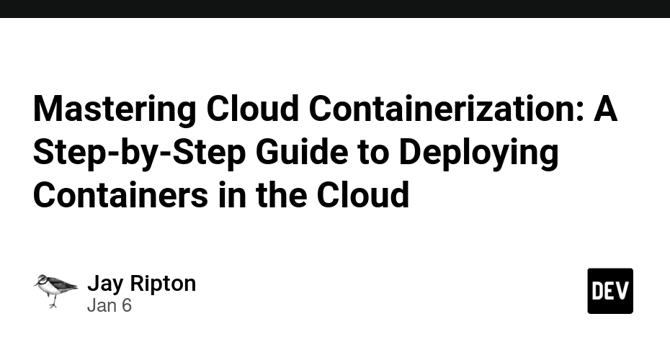Dev
1M
104

Image Credit: Dev
Mastering Cloud Containerization: A Step-by-Step Guide to Deploying Containers in the Cloud
- Cloud containerization involves packaging applications and their dependencies into lightweight, portable containers.
- Popular containerization tools include Docker, Podman, and Kubernetes.
- The benefits of cloud containerization include scalability, resource efficiency, rapid deployment, and improved DevOps practices.
- Before deploying containers in the cloud, install Docker, set up a cloud provider, and optionally install Kubernetes.
- To build and test a containerized application, create a Dockerfile, build the container image, and test the container locally.
- To deploy containers to the cloud, push the container image to a container registry and deploy it to a cloud service.
- Managing and scaling containers in the cloud is critical for maintaining performance and availability.
- Cloud-native monitoring tools like AWS CloudWatch and Google Cloud Monitoring can be used to track container performance.
- To ensure a successful containerization strategy, follow best practices like using lightweight base images, leveraging IaC, implementing security measures, and optimizing resource usage.
- Mastering the process of building, deploying, and managing containers is essential for success in modern application deployment.
Read Full Article
6 Likes
For uninterrupted reading, download the app